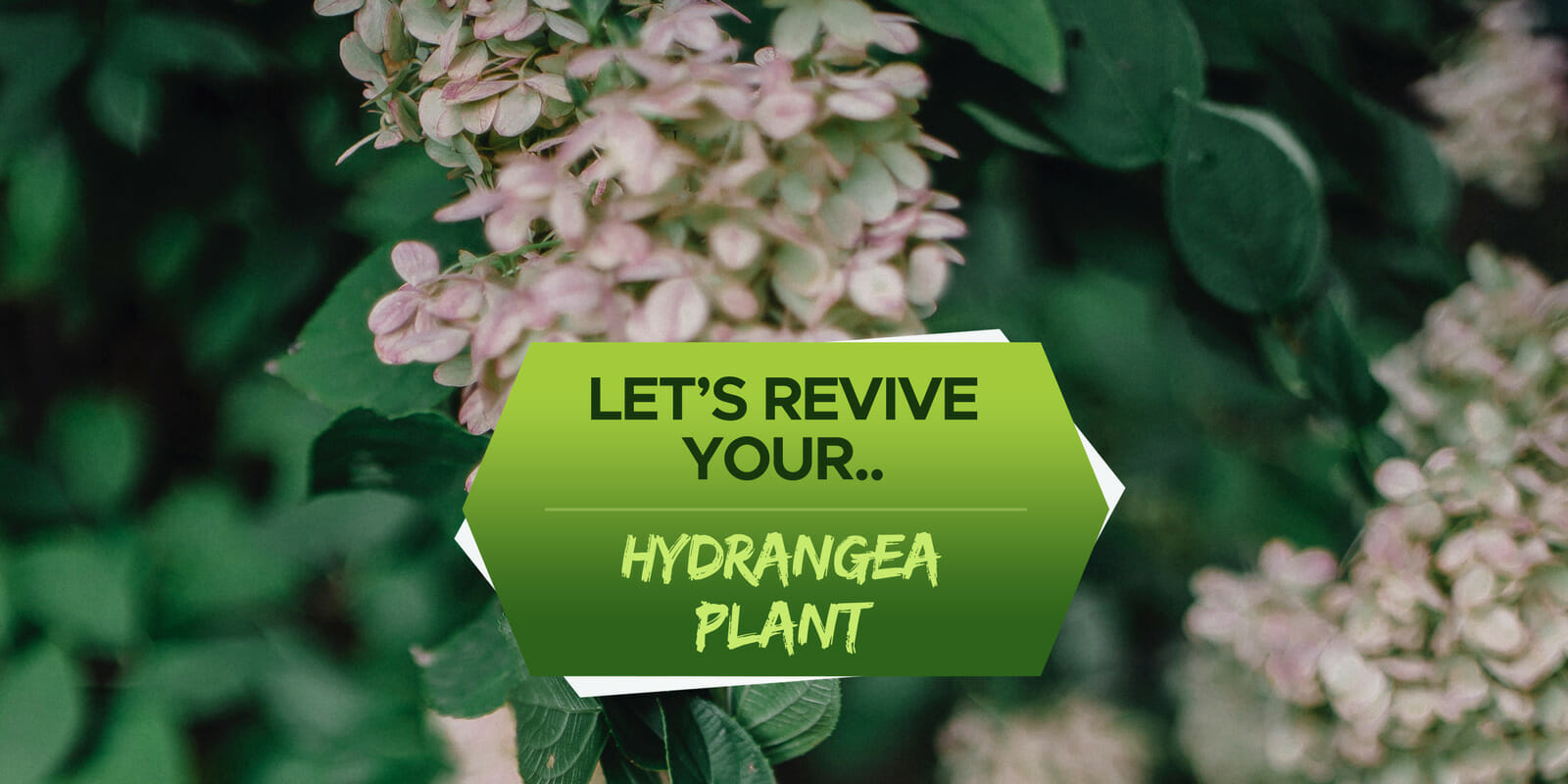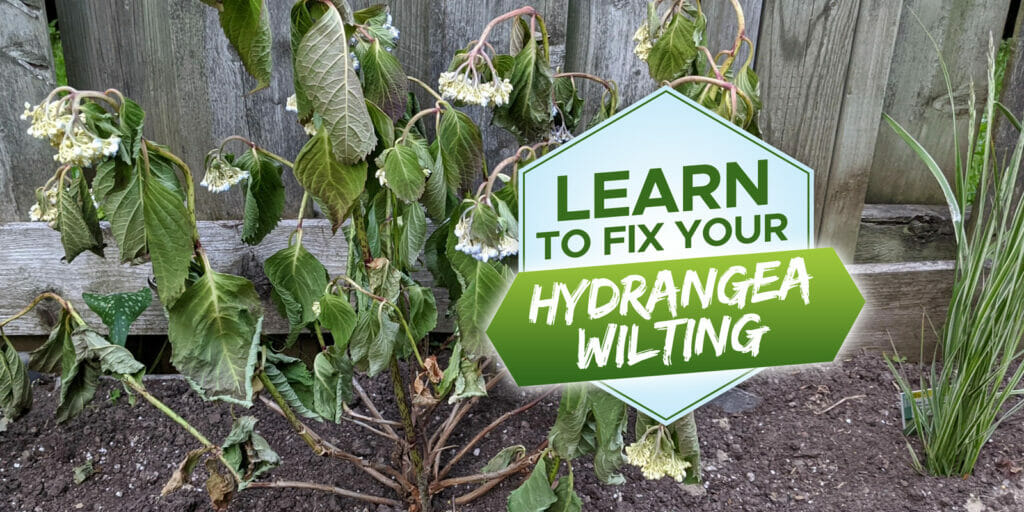We’ve all had the heartbreaking experience of seeing a beloved plant withering before our eyes, which can be very stressful. Luckily, if this happens with your hydrangeas, there may be something you can do about it. So how do you revive a hydrangea plant?
So, let’s answer the question of how to revive your hydrangea plant. Hydrangeas can be revived by meeting all their needs for a perfect growing environment, these include generous watering, moving them to a half-shaded area if possible, adding quality mulch to your soil and pruning off old stems.
Even if a hydrangea has shrunken down and dried out considerably, there still may be a chance that you can save it and help it return to its original glory. They are very hardy plants that tend to go dormant in the colder months, which makes them appear dead.
This article will dive into the needs of a hydrangea plant and help you bring your dying plant back to life.
What Are a Hydrangea’s Needs?
In order to revive your hydrangea, you need to know what it requires to grow at its best so let’s have a look at its basic needs:
| Hydrangea | |
| Climate | US hardiness zone 3-9 |
| Watering | Every three days |
| Soil | Well draining, any pH level |
| Light | Semi-shade |
Hailing from Asia and the Americas, hydrangeas are a deciduous shrub that is incredibly hardy and really easy for beginners to handle.
These small bushes have broad, ruffled leaves and large heads of clustered little flowers. These flowers can range from white, pink, red, purple, and blue and will bloom from summer into fall.
Why is My Hydrangea Dying?
Seeing a plant dying in your garden is horrible, but don’t worry; we are here to help you get to the bottom of the issue.
It is very common for your hydrangeas to dry out and look practically dead after experiencing some frost. However, they may not be dead; they are most likely lying dormant
The best way to tell the difference is to scratch back the outer layer of bark on the stem. If the flesh beneath is green, it is still alive, but if it is brown, it is a dead stem.
Even if your hydrangea is looking like it is too far gone, there are still ways you will be able to save it. Firstly, we need to figure out why your plant is dying.
Here are a few things that could be happening:
- Too much sun
- Not enough water
- Overwatering
- Over-fertilizing
- Root rot
- Frost
This list may seem daunting, and like it may be a lost cause but don’t worry, we are here to help! The results of all of these issues can be remedied with some work.
How to Revive Your Hydrangeas
The best way to bring your hydrangea back to life is to return it to its ideal living situation that we looked at at the beginning of the article.
Regarding root rot and overwatering, the best way to avoid these is to hold back from watering to let the soil dry out and remove any rotten areas.
In this guide, we will focus on a plant that has dried out and wilted. Keep in mind that the reviving techniques that we will be using today will only show results the following season.
Here are a few steps to revive your hydrangea:
1. Water Generously
The most important part of bringing a hydrangea back to life is watering.
Whether you keep them in a pot or in the ground, the first step is to give them a good drink. The soil they are in should be well-draining with a good amount of organic matter, so it retains the ideal amount of water.
From this point, you need to water your hydrangea around three times a week, adjusting for rain and hot weather.
2. Place in a Semi-Shaded Spot
If you have your hydrangeas in pots or are reviving a new plant from a garden store, then this step is much easier than if your plants are in the ground.
The best way to make sure that your plants won’t wilt too often or burn is to place them in an area that receives dappled sunlight or morning sun and afternoon shade.
If it is impossible to move them from a very sunny spot, you will need to water them more often to make up for it.
3. Trim Off Old Growth
For all varieties, gently remove any dead leaves, as this is where the new leaves will grow from.
Trimming will differ slightly depending on whether your variety of hydrangea blooms from old growth or new.
If it grows from new wood, then you want to trim off all the spent blooms just above a new leaf node. This may seem quite far down, but it will grow back from that point before blooming from that new growth.
If your variety grows from old wood, like hydrangea macrophylla, then you need to chop off the spent blooms from just beneath the base of the flower.
4. Refrain From Applying Fertilizer
Hydrangeas don’t require a lot of fertilizer. Too much of it will actually negatively affect the plant’s growth by burning the roots.
If your plant has drooped significantly following an application of fertilizer, we suggest flushing it out with water to try to dilute the fertilizer in the soil. Unfortunately, you will not be able to see results immediately as it will only recover by the following season.
5. Add Mulch to Your Soil
Remove any dead matter from around the hydrangea and apply a 2-3 inch layer of mulch all around the base of the plant.
Mulch is a combination of organic matter that helps the soil to retain its moisture through evaporation. It will also improve the soil structure and add essential nutrients for the plant.
Frequently Asked Questions:
What should I do if my hydrangea flowers turn brown?
Flowers going brown is a natural part of the plant’s lifecycle. Although we wish they did, the flowers will not last forever.
Once the flowers go brown and die, you can simply remove or ‘deadhead’ them to promote further blooming.
Why are my hydrangea leaves turning brown?
One of the first signs that your plant may be looking a little worse for wear is the leaves going brown.
This can be for several reasons, including too much sun, insufficient water, over-fertilizing, and overly heavy blooms.
How long does a hydrangea plant live?
Hydrangeas are very long-lasting shrubs that can live up to 50 years if properly cared for!
As you can see, they may appear to die off in the winter, but they will come back the next season once things warm up again.
Conclusion
Even at the very brink of death, hydrangeas are the types of magical plants that you can bring back to life with just a little extra know-how.
All they need is a good drink, a semi-shady spot, and some TLC to the soil to grow back healthy and strong in the next season.
Just follow this simple guide, and you will have beautifully blooming hydrangeas all summer and fall long.





